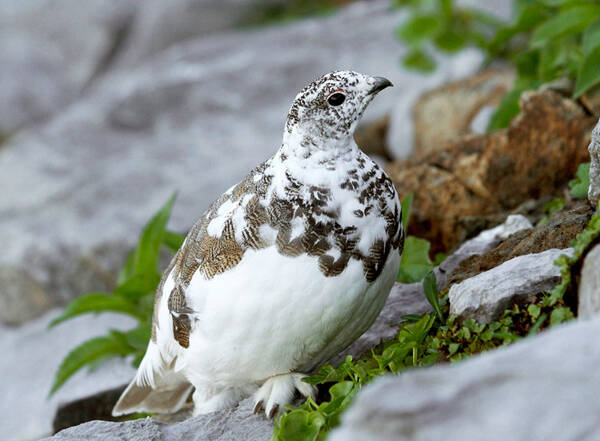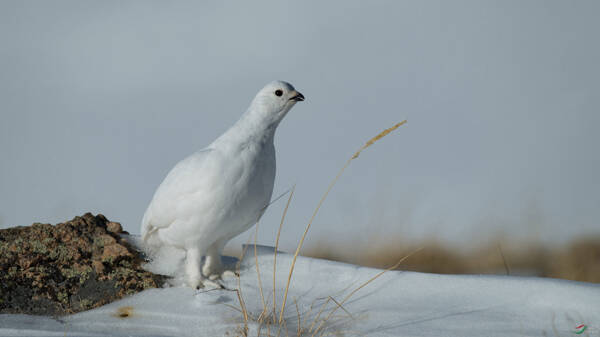Lagopus leucurus
IUCN
LCBasic Information
Scientific classification
- name:Lagopus leucurus
- Scientific Name:Lagopus leucurus,White-tailed Ptarmigan
- Outline:Landfowl
- Family:Chickeniformes G.family Pt.Genus
Vital signs
- length:About 34 cm
- Weight:About 1.3kg
- lifetime:No textual research information is available
Feature
In summer, the feathers are mottled, and in winter, both sexes are white
Distribution and Habitat
It is found from Alaska to western Canada and from the south to northern New Mexico. It is native to the mountainous regions of Canada and the western United States, Alaska. It has also been introduced to the Sierra Nevada, California's Wallowa Mountains, Oregon, and Utah.
The white-tailed ptarmigan is the only small bird in North America that permanently resides in the alpine regions. Habitat, including boulders, alpine coppice, snow fields, rocky sides, frosty soils and areas of mountain pasture. Winter is also maintained in the higher valleys and hillsides, in areas along the river with alders, willows, birch and spruce. It lives in tundra, tundra scrub forests and rocky meadow areas near the North Pole and is very hardy. Most of them move in groups except during the breeding period, and can even reach more than 100 in winter. Wide range of activities, winter will carry out long-distance migration. It's a typical boreal bird. Habitat changes with the seasons. It is foun
Appearance
The white-tailed ptarmigan is the smallest bird in the grouse family, measuring about 34 cm long and weighing 1,300 grams. Males are slightly larger than females. The feathers vary in color with the seasons, and are mottled in summer, with brownish reddish brown on the upper body and yellow-brown markings between them, usually with gray, brown or white spots, and narrow white edges at the tip. The throat and chest are sandy yellow with dark brown markings. The underbody is white, and the feet and toes are covered with white feathers. In winter, both males and females are white. The wings, belly and tail are white all year round. In the fall, during the hunting season in the United States, the plumage of both sexes is mostly light fleshy and reddish-brown, covered with brown-black spots, wavy patterns, worm-like lines, or stripes of various colors. Usually some of the chest and belly feathers are white, and the tail and wings are white. Iris dark brown; Horny to black mouth; White feath
Details
The White-tailed Ptarmigan (Lagopus leucurus) has five subspecies.

The white-tailed thunderbird has a stout, short bill, digs under the snow and eats almost exclusively plant food. It is a typical herbivorous bird and rarely eats insects. The plants eaten vary from season to season, with buds and branches eaten in winter and early spring, green leaves eaten in summer, and grass seeds and berries eaten in late summer and autumn. The plants are mainly birch, poplar and willow. Thunderbirds rely on bacterial assisted digestion to extract essential nutrients from their cecum. During the summer, they eat grit to help digest plant material.

White-tailed thunderbirds estrus from April to May and breed from May to July. When in heat, the posture is very like a domestic chicken, the tail is raised and spread, fanning the wings, and the song is like a domestic chicken, mostly in the morning and evening, when seeking a mate, the male birds often fight to protect their nest area or for the female bird, pecking each other's neck and head. Before pairing, the male will show off in his occupied territory and make mating calls to attract the female to mate. The nest is placed in the grass on the ground, for a simple oval small hole, with a small amount of dead branches, grass leaves, leaves, residual feathers and so on. Broods of 2-8 eggs are pear-shaped, weigh 3 grams, and are 45×32 mm in size. Eggs pale yellow, with varying sizes of light cinnamon and brown spots. Incubation period is 23 days.
Listed on the International Union for Conservation of Nature (IUCN) 2013 Red List of Threatened Species ver 3.1 - Low Risk (LC).
Protect wild animals and eliminate wild meat.
Maintaining ecological balance is everyone's responsibility!








